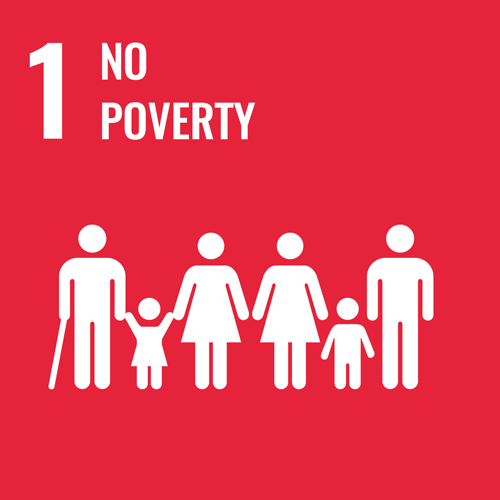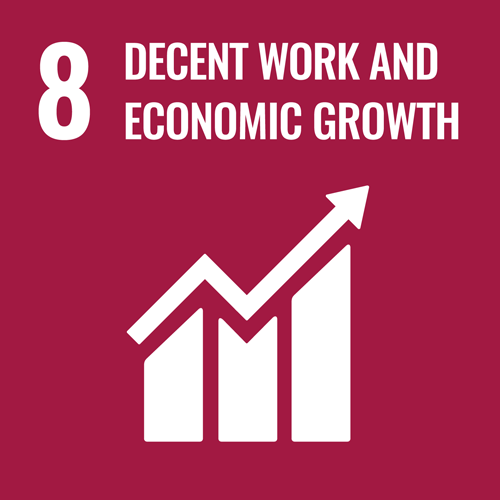In a world where an estimated 1.7 billion people do not have a bank account, can artificial intelligence help make financial inclusion a reality for everyone?
This was the topic under discussion at a webinar during the year-round AI for Good Global Summit 2020.
Inclusive financial access directly helps enable seven of the 17 United Nations Sustainable Development Goals. It requires people and businesses in underserved areas to have affordable and easy access to secure financial services and products.
This means being able to build credit, receive funds, deposit money, buy insurance, invest in education and health and withstand economic shocks.
With the rise of mobile phone use and information and communication technologies (ICTs) penetration in developing countries, financial service providers are now turning to artificial intelligence to make financial inclusion happen.
‘Superpowers’ for digital services
Typically, to lend money, providers use documents to verify the identity of a person, evaluate their credit score and offer a collateral loan. But AI tries to fix this for people who cannot meet these requirements, said panellist Rory Macmillan, Founding Partner at Macmillan Keck, Attorneys & Solicitors.
“AI is helping to get around the challenges of identification using tiered KYC [Know-Your-Customer verification process] approaches that allow an easier way of identifying people using face recognition and then also using data that is aggregated from digital activities,” he said. A person’s social network, their call history and even the top-ups on their mobile phone become alternative data sources. “The analytics of credit history and bringing people on board by identifying them better is a real driver for AI,” Macmillan added.
A paper by BFA Global said it was AI’s “practical superpowers” that helped offer chatbots, credit scoring, and facial and voice recognition for financial access in Africa, noted panellist Alexandra Rizzi, Senior Research Director at Accion’s Center for Financial Inclusion. “We see the potential for AI as [enabling] time-saving, cost-saving ways to make better decisions and expand economic opportunity, whether it is for providers who are using innovative underwriting methods to advance products and digital credit to the ‘unbanked’, or regulators who are using advanced AI and machine learning techniques for fraud detection and market monitoring,” she said.
Protecting the consumer
The economic shockwave unleashed by the COVID-19 pandemic has revealed “the importance of digital connectivity and the ability of governments, the private sector and development organizations to rapidly provide assistance through digital channels and financial accounts,” said panellist Kanwaljit Singh, Senior Program Officer at the Bill And Melinda Gates Foundation.
While AI-driven digital credit helps increase uptake, Singh emphasized the need to prevent predatory lending and ensure the sale of suitable products amid low rates of digital and financial literacy.
Rizzi is also keen that AI is developed and deployed responsibly for low-income, vulnerable consumers without replicating societal biases. She also reflected on the alternative data sources being used for AI, noting “how the democratization of mobile phones has allowed people to create more data trails for themselves and to be able to be visible in some ways to providers and other actors to offer services.”
But the risk of perpetuating certain societal dynamics and leaving out individuals and groups is still there, Rizzi warned. “We know that women in low and middle income countries are less likely to own a mobile phone, less likely to use mobile internet and less likely to use their phones for the sophisticated tasks that might generate a click stream that could then be leveraged by a provider to to offer them a product,” she highlighted.
AI and consumer protection is an area being studied by the Financial Inclusion Global Initiative (FIGI). Led by ITU, the World Bank Group and the Committee on Payments and Market Infrastructures, the three-year programme of collective action funded by the Bill and Melinda Gates Foundation aims to advance research in digital finance and accelerate digital financial inclusion in developing countries.
Overcoming innovation obstacles
The challenges and opportunities of improving financial inclusion are often driven by commercial profit and whether providers can achieve this through market dominance, said Macmillan.
Some telecom operators offer mobile money and form partnerships with banks, he explained, noting “a potential risk of [telecoms] dominating the digital credit market and consumers not having an extensive choice.”
For interoperability, which allows transfer of money between different platforms and accounts, competition authorities need to talk to financial regulators, central banks and telecom authorities to work out how to implement these requirements.
According to Macmillan, another solution being introduced – albeit not in many low-income countries – is open banking. This requires financial institutions such as established incumbent banks to make data about their customers available to competing providers, he said.
Singh underscored the need for regulators and technologists to start speaking each other’s language. “One of the biggest challenges in innovating in this area is that concepts such as data or privacy and their definitions are not well settled. There is no universal standardized definition of privacy,” he pointed out, adding: “we need to ask questions about whether the poor are impacted more by ‘too much privacy’ or are they paying the cost of ‘too much protection of privacy’.”
Singh went on to raise the importance of collaboration between regulators and technologists when it comes to central bank digital currency (CBDC): a digital equivalent for banknotes and coins offered by central banks using blockchain and distributed ledger technology. While CBDC seems to have the potential to enhance financial inclusion and has been piloted in Uruguay and China, questions on its implementation and the role of cloud computing and AI remain, said Singh.
Accountable decision-making
Quality of data for AI-driven financial inclusion was a recurring theme throughout the panel.
“We are in a very ‘Wild West’ kind of data world where a lot of data brokers buy and sell lists of individuals with different attributes and many of them are out of date,” said Macmillan. Low-quality, biased data used to train algorithms will not be effective in analyzing a person, he noted. “The better the data analytics, the better the decisions will be when extending credit. And the better the non-performing loan rates are, the higher profits will be,” Macmillan explained.
The experts also linked accountability to the AI’s explainability, which refers to the ability to explain an algorithm’s decisions to a user or customer. Macmillan noted the idea of ‘counterfactuals‘ created by Sandra Wachter, Brent Mittelstadt and Chris Russell at the Oxford Internet Institute to explain opaque algorithmic decisions. Instead of a straightforward explanation, counterfactuals describe the minimum conditions that would have led to an alternative decision. For instance, a customer can know what they could have done differently to receive a desired outcome, such as a loan or health insurance.
Rizzi’s team, drawing on their work in consumer protection, is looking at provider management systems to evaluate support for responsible practices. “That starts from who decides what data sources are appropriate, the assumptions made about what that data is proxying for, and who selects appropriate training data sets,” she said.
“A lot of those decisions are made by humans and these can be documented and discussed with external actors,” Rizzi added, pointing to a need for formalizing a documentation system.
At the end of the day, Singh noted, it is crucial to see how technologies such as AI can help drive lower costs for financial inclusion. “Let’s say, in customer service, these chatbot-driven systems look at customer complaints. With developments in voice technologies and natural language processing, people can talk about their grievances. When providers and regulators can act upon them so all of these elements come together to lower the cost of the whole system, I think that’s what matters.”
Image credit: cottonbro via Pexels

















